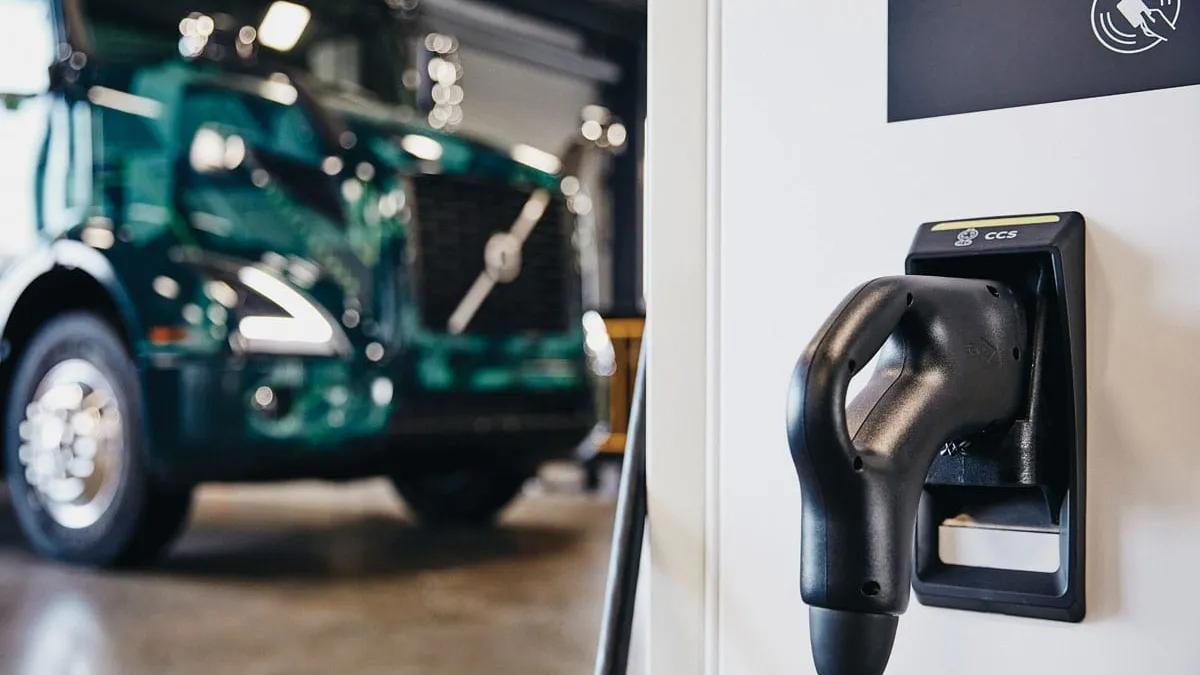Dive Brief:
- Low demand for electric trucks is a barrier to widespread adoption in the freight transport industry, according to a study from the Electrification Coalition, released Thursday.
- Fleets are waiting for the electric-vehicle market to mature, the report reads. The technology is too new, fleets are not generally motivated by the current regulatory environment to buy EVs, and there isn't enough familiarity with the equipment to facilitate ubiquitous deployment, according to the study.
- Other barriers to electrification include high upfront costs and associated tariffs, costly and complex charging infrastructure, lack of data on total cost of ownership and performance specifications, limited maintenance capability, vehicle and facility ownership structures, among others.
Dive Insight:
OEMs are developing electric truck technology, and the country's largest fleets are testing them, but without a business case for adoption, fleets have little motivation to make the investment.
"High vehicle purchase price is perceived as one of the largest barriers to freight electrification," the report reads, citing a 2020 study from the Hewlett Foundation.
Electricity prices are historically lower and more stable than diesel and gasoline prices, the report states, citing the Department of Energy. That's bodes well for fleets in the long run. But there are many aspects of charging and associated technology and infrastructure that needs to be worked out before fleets can save costs long term.
The most expensive part of an EV is the battery, according to the Electrification Coalition. Because battery technology is so new for heavy-duty trucks, OEMs have struggled to scale production and are footing large bills to figure out solutions.
Tesla's Elon Musk said in the OEM's most recent earnings call that batteries are the "only real constraint on the Semi's progress." The company raised its expectation for capital spending in 2021 and 2022 by $2 billion, driven by expansion in battery cell factories and other investments to expand battery manufacturing capacity.
"When interviewed by the [Electrification Coalition] about challenges and concerns regarding charging infrastructure, more than 75% of private fleets interviewed confirmed that planning and installing EV infrastructure for [electric trucks] was one of the largest barriers," according to the report.
Partnership is necessary to solve this puzzle. Tesla is looking for infrastructure partners, and Navistar tapped In-Charge Energy in August. California — the only state aggressively curbing emissions through regulation — is investing in charging infrastructure, as well.
Fleets have a long list of infrastructure details to work out, to deploy electric trucks. According to the Electrification Coalition report, fleets must select and purchase the stations, and project teams have to address siting, planning, commercial utility interconnection requirements, construction permits and final installation. Considerations must also be made for software, maintenance, grid capacity and other aspects. A project could take up to 13 months, the report noted, citing Pacific Gas and Electric.
"Currently, establishing a network of charging stations to serve a fleet of commercial electric trucks is a much more complex than setting up a few diesel fueling stations and mapping out existing stations along shipping routes, and project costs are harder to estimate," the report reads.
These aspects and other unknowns makes calculating the total cost of ownership difficult. But, it's also worth adding in the upside of EVs. Besides the obvious emissions benefits, trucks that run on alternative fuels might be more attractive to drivers, which could help reduce turnover. And going green can play to the general public's trend toward sustainability, making the business more attractive.
The Electrification Coalition report gives five goals that will help facilitate widespread adoption of electric trucks:
- Optimize performance, hauling capacity, range, weight and driving range.
- Build out a nationwide infrastructure network.
- Establish brand a model familiarity.
- Establish a large used-vehicle market.
- Equipment design and development should match with market demands.











